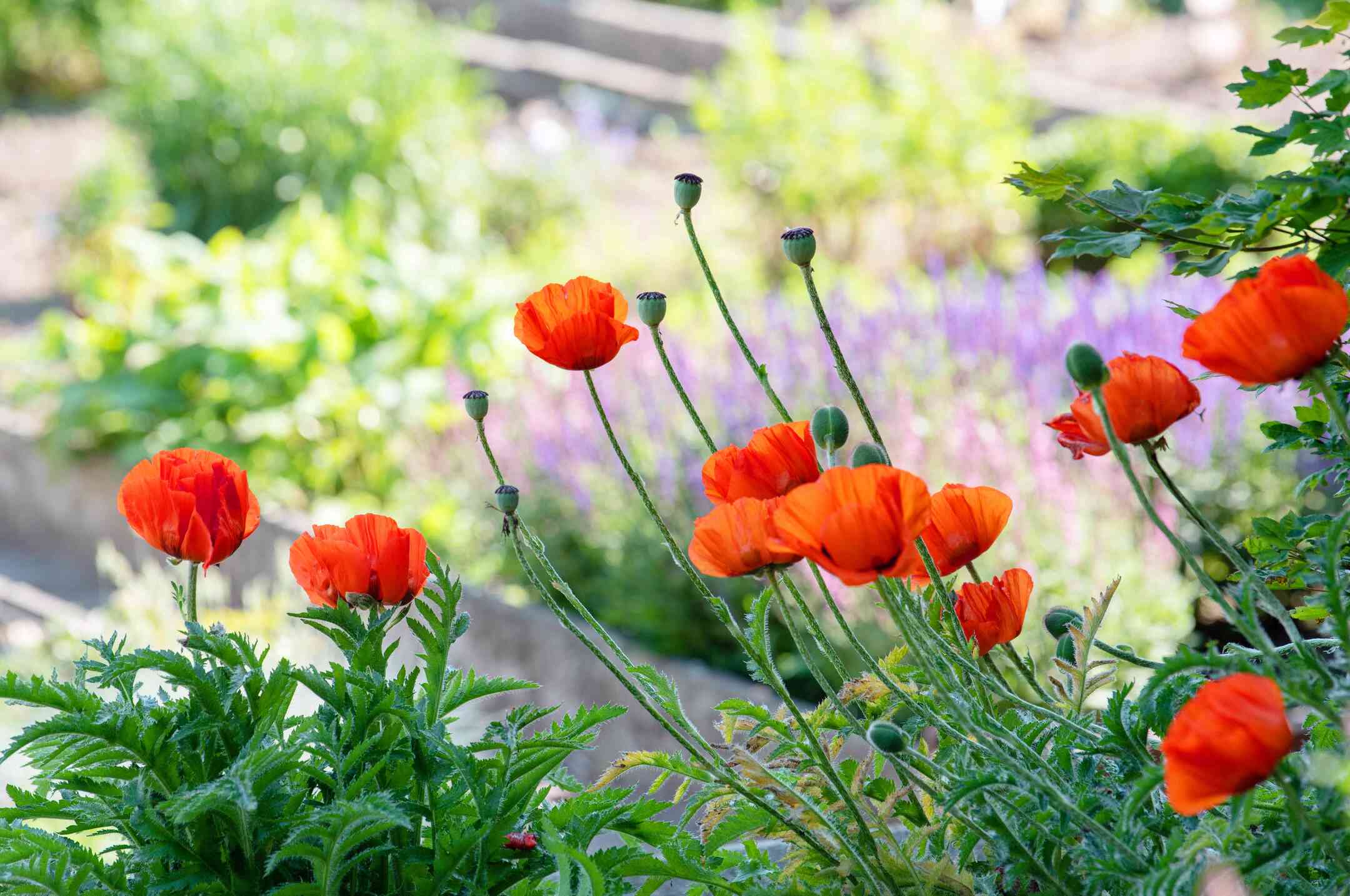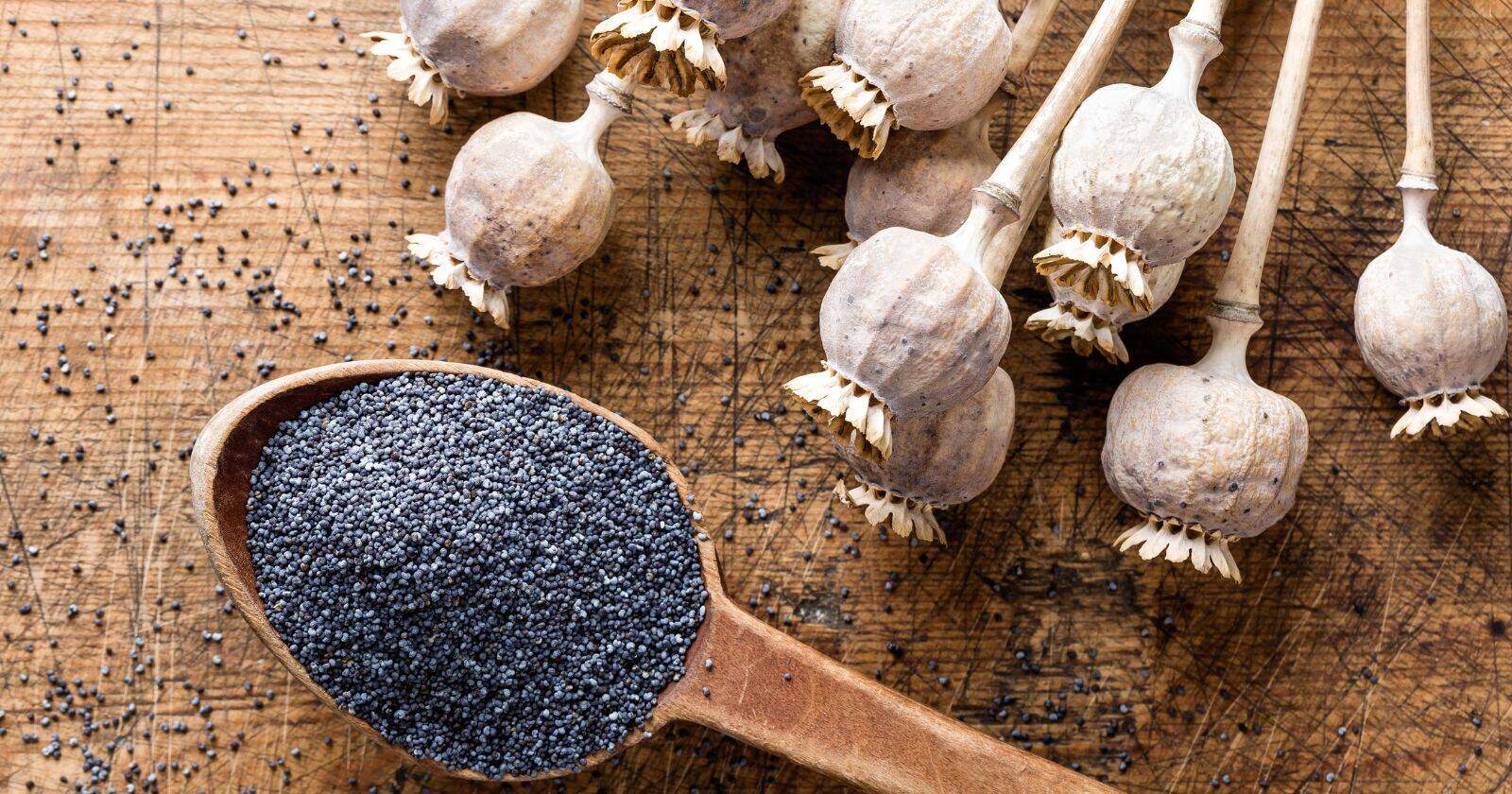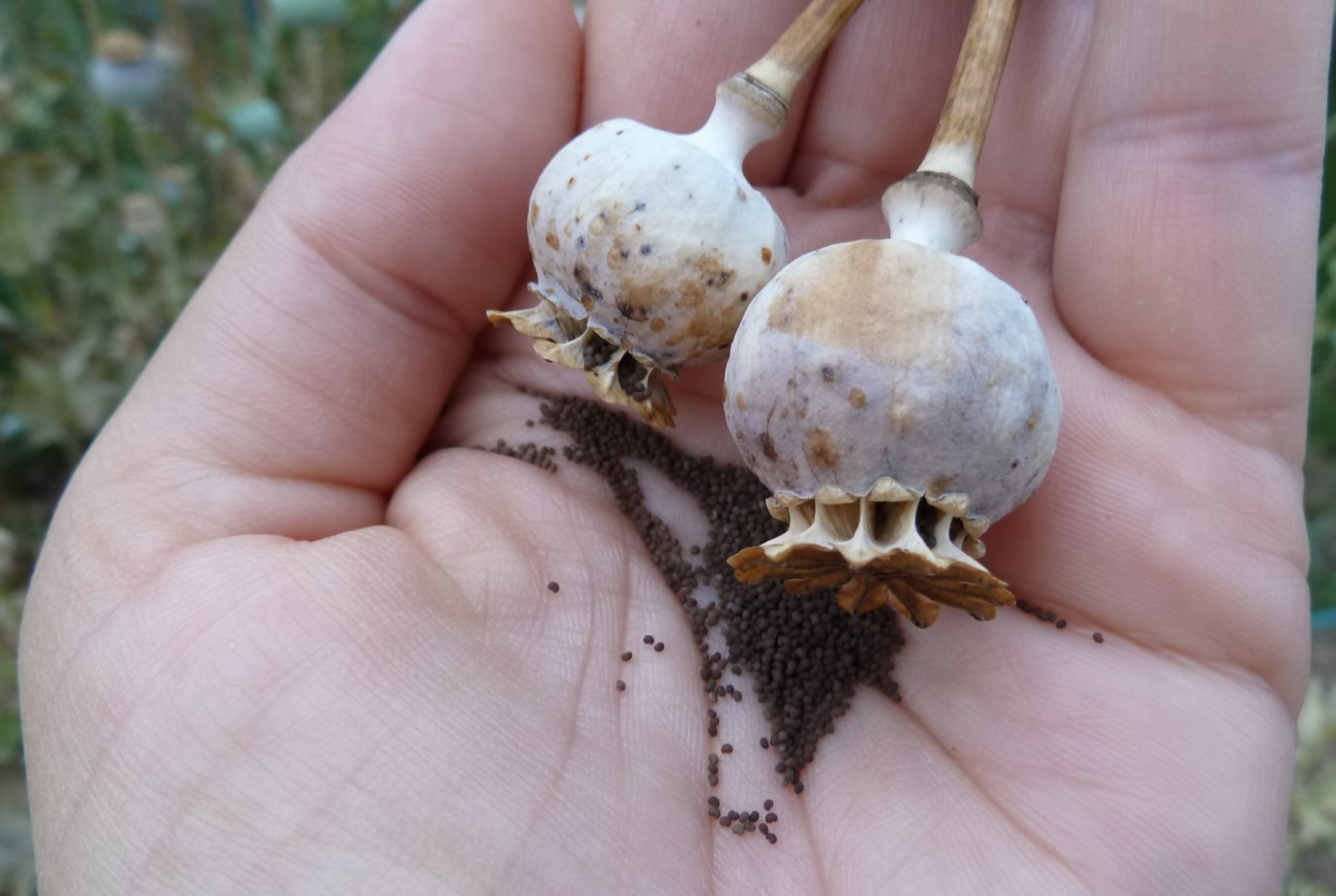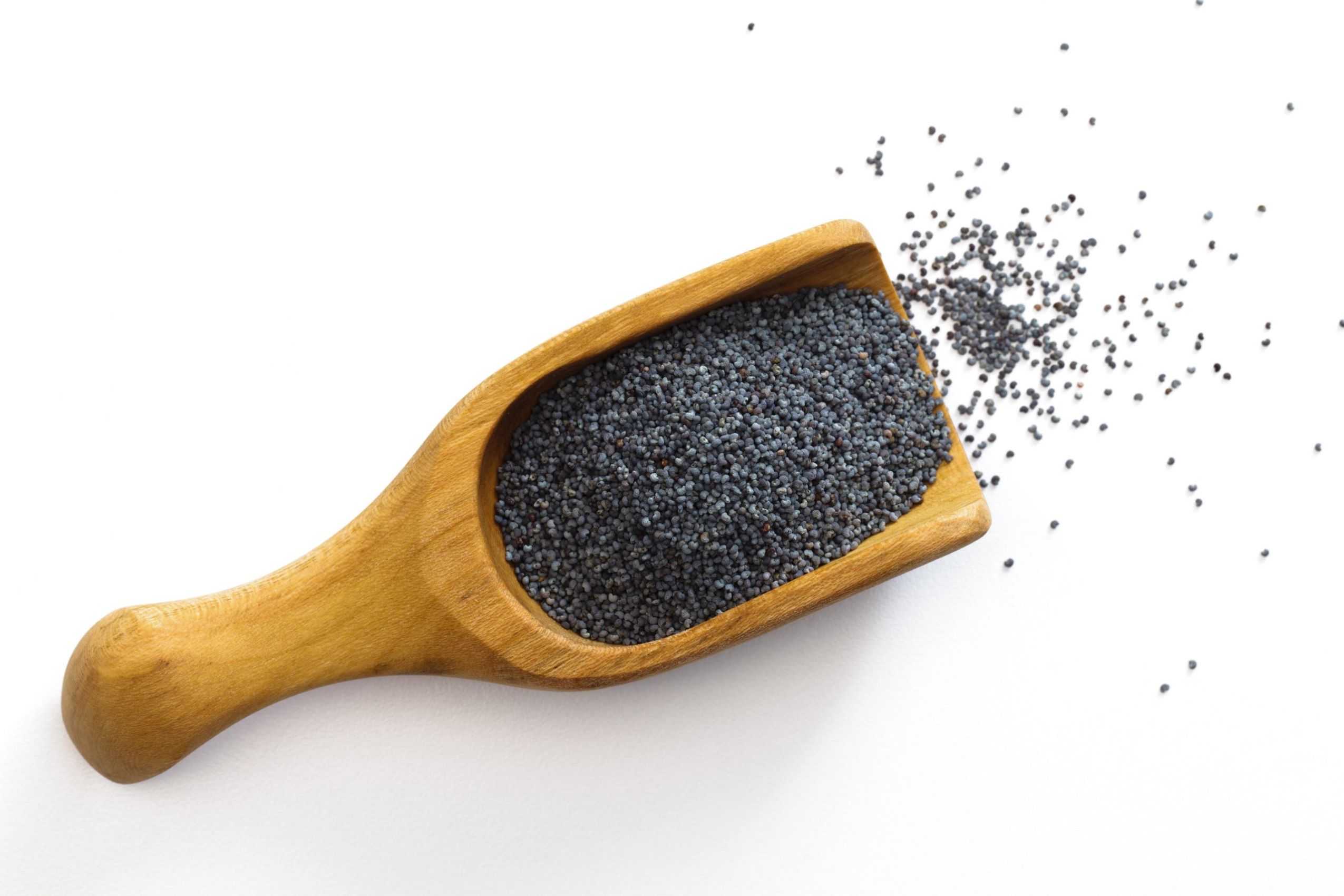Home>Garden Essentials>How To Grow Poppies From Seed


Garden Essentials
How To Grow Poppies From Seed
Modified: August 24, 2024
Learn how to grow beautiful poppies from seed in your garden. Get expert tips and advice on planting, care, and maintenance. Start your own poppy garden today!
(Many of the links in this article redirect to a specific reviewed product. Your purchase of these products through affiliate links helps to generate commission for Storables.com, at no extra cost. Learn more)
Introduction
Welcome to the world of poppies! These beautiful and vibrant flowers are a popular choice for gardeners due to their striking colors and delicate petals. Whether you’re a seasoned gardener or a beginner, growing poppies from seed can be a rewarding experience. Not only do poppies add visual appeal to your garden, but they also attract beneficial pollinators such as bees and butterflies.
In this article, we’ll guide you through the process of growing poppies from seed. From choosing the right seeds to ensuring optimal growing conditions, we’ll cover everything you need to know to successfully cultivate these stunning flowers in your garden.
Before we dive into the details, it’s important to understand that there are different types of poppies, each with its own unique characteristics and growing requirements. Some common varieties include the California Poppy, Oriental Poppy, and Iceland Poppy. Make sure to research the specific type of poppy you wish to grow to ensure you provide the ideal conditions for its success.
Now, let’s get started on your journey to growing poppies from seed!
Key Takeaways:
- Choose the right poppy seeds to match your garden’s needs and ensure successful growth. Consider factors like germination rate, growing conditions, and seed quantity for a vibrant and colorful garden.
- Prepare the soil, plant the seeds, and provide proper care to grow healthy and beautiful poppy plants. Balance sunlight and water, protect against pests and diseases, and enjoy the rewards of harvesting blooms and seeds.
Read more: How To Grow Poppy Flowers From Seed
Choosing the Right Poppy Seeds
When it comes to choosing poppy seeds, there are a few factors to consider. First and foremost, determine the type of poppy you want to grow. Different types have varying colors, sizes, and growth habits, so select the one that aligns with your preferences and garden aesthetics.
Once you have decided on the type of poppy, it’s time to select the seeds. Look for reputable seed suppliers or nurseries that specialize in flower seeds. This will ensure that you’re getting high-quality seeds that are more likely to germinate and produce healthy plants.
Pay attention to the seed packet or product description to gather key information. Look for details such as the germination rate, which indicates the percentage of seeds that are likely to sprout. A higher germination rate gives you better chances of success.
Consider the growing conditions recommended for the specific poppy variety you’ve chosen. Some types of poppies thrive in full sun, while others prefer partial shade. Check whether the seeds you’re purchasing are suited for your specific climate and growing zone.
It’s worth mentioning that some gardeners prefer to collect poppy seeds from existing plants in their gardens. This allows them to grow varieties that have adapted to their local conditions. If you have access to mature poppy plants, you can collect the seeds by gently shaking the seed pods into a container. Just ensure the seeds are fully mature and dry before storing them.
Lastly, consider the quantity of seeds you need. If you have a large garden space, you may want to purchase seeds in bulk. However, if you have limited space or are experimenting with poppies for the first time, a smaller quantity may be sufficient.
By choosing the right poppy seeds, you set the foundation for successful growth and a colorful, blooming garden. Take your time to make an informed decision and enjoy the process of selecting the perfect seeds for your needs.
Preparing the Soil
Proper soil preparation is essential for the successful growth of poppies. While these flowers are generally not very demanding when it comes to soil, creating the right conditions will help them thrive and produce beautiful blooms.
Start by selecting a location in your garden that receives adequate sunlight. Most poppy varieties prefer full sun, which means at least 6 hours of direct sunlight per day. Ensure that the area has good drainage to prevent waterlogging, as poppies don’t tolerate soggy soil.
Next, assess the soil quality. Poppies prefer well-draining soil that is slightly acidic to neutral (pH level of 6.0 to 7.0). If your soil is heavy or clayey, it’s a good idea to amend it with organic matter such as compost or well-rotted manure. This will improve drainage and add nutrients to the soil.
Prepare the soil by removing any weeds or grass from the planting area. Use a garden fork or tiller to loosen the soil to a depth of about 6 to 8 inches (15 to 20 cm). Remove any large rocks or debris that may hinder root growth.
Before sowing the poppy seeds, it can be beneficial to rake the soil to create a fine, crumbly texture. This will provide a better surface for the seeds to make contact with and establish roots.
If you’re planting multiple rows of poppies, allow enough space between the rows to ensure adequate air circulation. This will help prevent the onset of fungal diseases. Depending on the specific variety of poppy, spacing can range from 6 to 12 inches (15 to 30 cm) apart.
By adequately preparing the soil, you create an optimal environment for your poppy seeds to germinate and grow. Good soil structure and texture will promote healthy root development, leading to vigorous plants and abundant blooms.
Planting Poppy Seeds
Now that you’ve chosen the right poppy seeds and prepared the soil, it’s time to sow the seeds and kickstart the growth process.
The best time to plant poppy seeds depends on your climate and the specific variety you’re growing. In general, it’s best to plant poppy seeds in early spring when the soil has started to warm up. This allows for optimal germination and establishment of the plants.
Begin by creating small furrows or shallow trenches in the prepared soil. Aim for a depth of around ¼ to ½ inch (0.6 to 1.2 cm). You can do this by dragging the edge of a garden trowel or a straight stick along the soil surface.
Take your poppy seeds and sprinkle them evenly along the furrows. Avoid clumping the seeds together as this can lead to overcrowding and competition for resources. Aim for a spacing of about 6 to 12 inches (15 to 30 cm) between seeds, depending on the variety.
Once the seeds are scattered, lightly cover them with a thin layer of fine soil or compost. Remember that poppy seeds require light to germinate, so don’t bury them too deeply. A covering of 1/8 to 1/4 inch (0.3 to 0.6 cm) is sufficient.
Gently pat down the soil to ensure good seed-to-soil contact. This will help with moisture retention and facilitate germination. Water the area lightly but thoroughly, using a gentle sprayer or watering can.
It’s important to keep the soil moist but not overly saturated during the germination period. Water regularly, making sure the soil doesn’t dry out completely. Avoid overwatering, as this can lead to rotting of the seeds.
Depending on the variety, poppy seeds typically germinate within 7 to 21 days. Be patient and provide consistent care, monitoring the soil moisture and adjusting watering as necessary.
As the seedlings emerge, thin them out if they are too crowded. Aim for a spacing of 6 to 12 inches (15 to 30 cm) between plants to allow for proper airflow and healthy growth.
With proper planting techniques, you’ll soon see your poppy seeds sprouting and beginning their journey towards becoming beautiful and vibrant flowers in your garden.
Watering and Sunlight Requirements
Water and sunlight are crucial factors in the growth and development of poppies. Understanding their specific requirements will help you provide the optimal conditions for your plants.
Let’s start with sunlight. Most poppy varieties prefer full sun, which means at least 6 hours of direct sunlight per day. Find a location in your garden that receives adequate sunlight and ensure that there are no obstructions that may shade the plants. Poppies thrive in bright, sunny conditions and will reward you with more vigorous growth and abundant blooms if given the right amount of sunlight.
When it comes to watering, poppies have moderate moisture needs. They prefer consistently moist soil during their early growth stages but can tolerate some periods of drought once established. It’s important to strike a balance and avoid waterlogging the soil, as this can lead to root rot and other moisture-related issues.
Water your poppy plants deeply and thoroughly, allowing the water to penetrate the soil and reach the root zone. Aim for a weekly watering schedule, adjusting according to weather conditions. Monitor the soil moisture by inserting your finger into the soil. If it feels dry about an inch (2.5 cm) below the surface, it’s time to water.
Consider using a drip irrigation system or a soaker hose to deliver water directly to the roots and minimize evaporation. This will help conserve water and promote efficient absorption by the plants.
During hot and dry periods, it may be necessary to increase the frequency of watering. Pay attention to signs of stress in your poppy plants, such as wilting or yellowing leaves, and adjust your watering accordingly.
As the plants reach maturity and start to form flower buds, try to maintain a slightly drier soil. This can help intensify the color and fragrance of the blooms. However, ensure that the soil never becomes bone dry, as this can cause the flowers to wilt prematurely.
In summary, poppies thrive in full sun and require moderate moisture levels. Provide them with ample sunlight and water consistently, allowing the soil to dry out slightly between waterings. By meeting their sunlight and watering needs, you’ll have healthy, vibrant poppy plants gracing your garden.
Plant poppy seeds in well-draining soil in a sunny spot. Water regularly, but avoid overwatering. Thin seedlings to give them space to grow.
Read more: How To Plant Poppies From Seed
Protecting Poppies from Pests and Diseases
Like any garden plants, poppies can fall victim to pests and diseases. However, with proper care and preventive measures, you can minimize the risk and keep your poppy plants healthy and thriving.
One common pest that affects poppies is aphids. These tiny insects feed on plant sap and can cause stunted growth and distorted leaves. To control aphids, regularly inspect your poppy plants and look for clusters of these pests on the leaves and stems. If you spot aphids, you can gently spray them off with a strong stream of water or use an organic insecticidal soap to eliminate them.
Another troublesome pest for poppies is slugs and snails. These slimy creatures can consume large portions of the plant, particularly in damp and shady areas. To protect your poppies from slugs and snails, consider implementing slug and snail barriers around the plants. Copper tape or diatomaceous earth can act as effective deterrents. You can also handpick the pests and dispose of them away from your garden.
Fungal diseases, such as powdery mildew and root rot, can also affect poppies, especially in humid conditions or when the plants are overwatered. To prevent these diseases, ensure proper air circulation around the plants by spacing them adequately apart. Avoid overhead watering and water the soil directly to minimize moisture on the foliage. If you notice signs of fungal infection, such as powdery white spots or wilting leaves, treat the plants with a suitable fungicide according to the product instructions.
It’s important to note that poppy plants may attract bees and other pollinators, which are beneficial for your garden. Be mindful of using harsh chemicals or pesticides that may harm these important pollinators. Opt for organic and bee-friendly pest control methods whenever possible.
In addition to pest and disease control, maintaining overall plant health is key to preventing issues. Provide your poppy plants with adequate nutrition through regular fertilization. Use a balanced, slow-release fertilizer or incorporate compost into the soil before planting. Healthy plants are more resilient to pests and diseases.
By remaining vigilant and promptly addressing any pest or disease issues, you can protect your poppy plants and ensure their vitality throughout the growing season. Regular monitoring, proper cultural practices, and targeted interventions will go a long way in safeguarding your poppies.
Harvesting Poppies
As your poppy plants reach maturity, you’ll have the opportunity to harvest their beautiful blooms. The timing of the harvest will depend on the specific variety you’re growing and its intended use.
If you’re growing poppies primarily for their ornamental value, you can start harvesting the blooms as soon as the petals fully open and the flower is at its peak beauty. Gently hold the stem near the base and carefully cut the flower with sharp, clean scissors or pruning shears. It’s best to harvest the flowers in the morning when they are at their freshest and have the highest moisture content.
For those interested in collecting poppy seeds, wait until the flowers have faded and the seed pods have formed. The seed pods are rounded or elongated structures that develop at the center of the flower after the petals have fallen. They will start out green and eventually turn brown or tan as they dry out. Harvest the seed pods by cutting the stem just below the pod when it has turned completely brown and feels dry to the touch.
To collect the seeds from the dried pods, place them in a paper bag or envelope and allow them to further dry for a week or two. Once completely dry, gently crush the pods to release the seeds, being careful not to crush them too forcefully. Separate the seeds from the debris and store them in a cool, dry place in an airtight container.
It’s important to note that some poppy varieties are considered as “opium poppies,” which contain alkaloids that have medicinal properties and are regulated in many parts of the world. If you’re growing these types of poppies, be aware of the legal restrictions and regulations in your area regarding cultivation and harvesting.
Regardless of your purpose for harvesting, always handle poppies with care, as their sap can stain surfaces and clothing. Take precautions to avoid contact with the sap, and if you do come into contact with it, wash the affected area with soap and water immediately.
By practicing proper harvesting techniques, you can enjoy the beauty of freshly cut poppy flowers or collect seeds for future plantings or culinary uses. Harvesting at the right time ensures the best quality and prolongs the enjoyment of your poppy plants.
Storing Poppy Seeds
Once you have harvested the poppy seeds, it’s important to store them properly to maintain their quality and viability for future use. Proper storage conditions will help prevent mold, moisture, and pests from damaging the seeds.
Before storing the seeds, ensure they are completely dry. If the seeds feel slightly moist, spread them out on a clean, dry surface and allow them to air dry for a few days. Make sure they are thoroughly dry before proceeding with storage.
When it comes to storage containers, opt for airtight glass or plastic containers that have a secure lid. Avoid using paper or plastic bags, as they are not as effective at maintaining the seeds’ freshness and protecting them from pests.
Before transferring the seeds into the storage container, remove any remaining debris or chaff by gently blowing on them or sieving them through a fine mesh screen. This will ensure that only clean and viable seeds are stored.
Label the storage container with the variety and date of harvest. This will help you keep track of the seeds and their freshness over time.
Store the containers in a cool, dry, and dark location, such as a pantry or refrigerator. The ideal storage temperature for poppy seeds is between 35°F and 50°F (2°C and 10°C). Avoid exposing the seeds to direct sunlight or high temperatures, as this can negatively impact their quality and viability.
Regularly check on the stored seeds to ensure they remain dry and pest-free. If you notice any signs of mold, moisture, or pests, take immediate measures to address the issue. Remove any affected seeds to prevent the problem from spreading to the rest of the stored batch.
It’s worth noting that poppy seeds can remain viable for a few years when stored properly. However, their germination rates may decline over time. To maintain optimal germination, consider replenishing your seed stock every year or every other year.
By following these storage guidelines, you can enjoy the convenience of having poppy seeds on hand for future planting or culinary endeavors. Proper storage ensures the longevity and viability of the seeds, allowing you to continue enjoying the beauty and benefits of these wonderful flowers.
Conclusion
Congratulations on your journey to growing poppies from seed! By following the steps outlined in this article, you have learned how to choose the right poppy seeds, prepare the soil, plant the seeds, and care for your poppy plants. From there, you explored the importance of providing adequate water and sunlight, protecting your plants from pests and diseases, and reaping the rewards of harvesting beautiful blooms and collecting fresh seeds.
Growing poppies can be a truly rewarding experience. These vibrant and enchanting flowers add a touch of beauty and elegance to any garden or landscape. Whether you’re growing them for their ornamental value or to collect seeds for future use, poppies never fail to captivate with their delicate petals and mesmerizing colors.
Remember to choose poppy seeds that suit your preferences and growing conditions, prepare the soil to provide optimal nutrients and drainage, and ensure your plants receive adequate water and sunlight. Stay vigilant against pests and diseases, employing preventative measures to protect your poppy plants. Harvesting the blooms at the peak of their beauty and collecting seeds for future propagation will allow you to continue enjoying the wonders of these stunning flowers.
As you embark on your poppy-growing journey, don’t forget to infuse your own creativity and personal touch. Experiment with different poppy varieties and explore their unique characteristics. Let your garden become a canvas where you express your love for nature and create a sanctuary for these alluring blooms.
Lastly, cherish the moments spent observing your poppy plants as they grow and blossom. Appreciate the pollinators they attract, the colors they exhibit, and the joy they bring. Gardening is a constant learning process, and each season presents new opportunities for growth and discovery.
So grab some poppy seeds, roll up your sleeves, and get ready to embark on a journey filled with beauty, fascination, and the wonders of nature. Happy growing!
Frequently Asked Questions about How To Grow Poppies From Seed
Was this page helpful?
At Storables.com, we guarantee accurate and reliable information. Our content, validated by Expert Board Contributors, is crafted following stringent Editorial Policies. We're committed to providing you with well-researched, expert-backed insights for all your informational needs.















0 thoughts on “How To Grow Poppies From Seed”